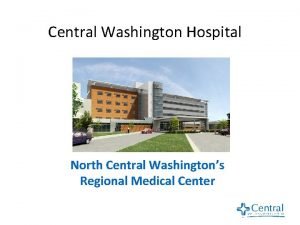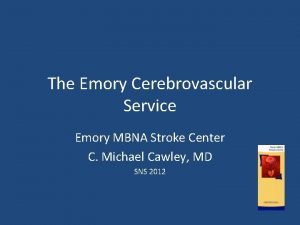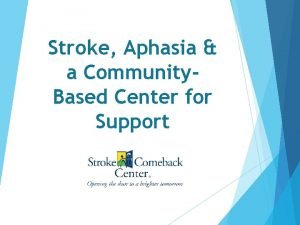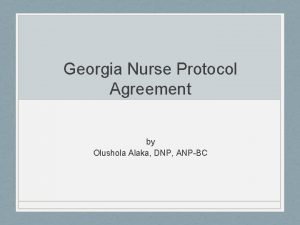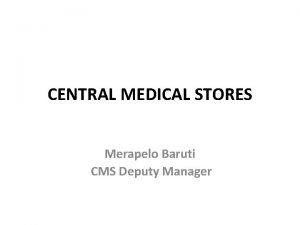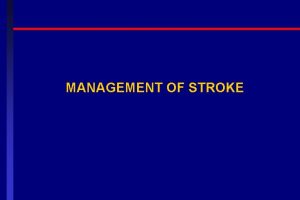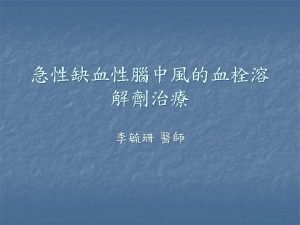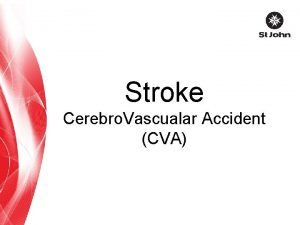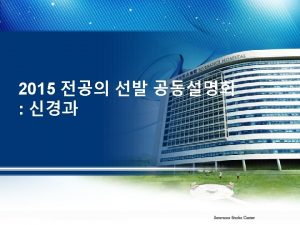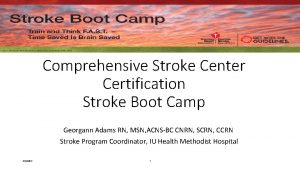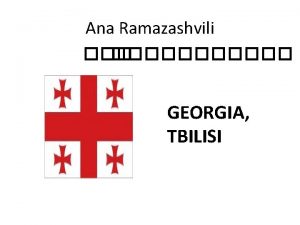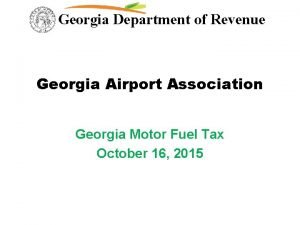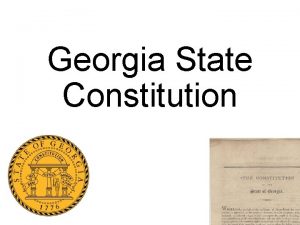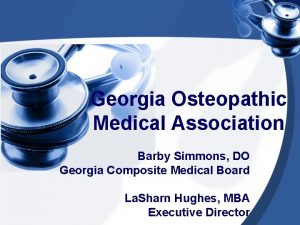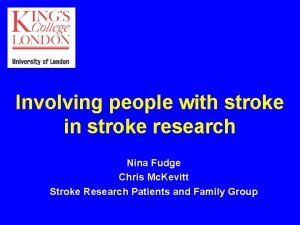The Medical Center of Central Georgia Stroke Center















- Slides: 15

The Medical Center of Central Georgia Stroke Center

Background • A Stroke occurs if: ØIschemic: Blood supply to part of the brain is suddenly interrupted (e. g. a clot). ØHemorrhagic: A blood vessel in the brain bursts • Other names for a stroke: ØCVA ØTIA ØBrain Attack

Ischemic Stroke • Blood vessel becomes occluded and blood supply to part of the brain totally or partially blocked – Embolic: Blood clot forms somewhere in the body and travels through the bloodstream to your brain – Thrombotic: Blood flow is impaired because of a blockage to one or more of the arteries supplying blood to the brain • Account for 85 -90% of strokes

Hemorrhagic Stroke • Occurs when a blood vessel in the brain ruptures or bleeds Intracerebral: – Bleeding occurs from vessels within the brain itself – High blood pressure is the primary cause Subarachnoid: – Aneurism burst near the membrane surrounding the brain – Causes the brain to be surrounded by blood contaminated fluid

Primary Stroke Mechanisms

U. S. Statistics • 750, 000 people suffer a stroke each year. • Stroke is 3 rd leading cause of death annually • Stroke is the leading cause of serious long-term disability • 14% of people who have a stroke will have another within one year • 40, 000 more women than men have a stroke each year • Stroke care costs more than $52 billion annually

Stroke Death Rates per 100, 000, US Adults Ages 35+, 1991 -1998 Age-adjusted Average Annual Deaths per 100, 000 • Stroke mortality rates are 150% of the national average in the “Stroke Belt” (Georgia, South Carolina, North Carolina) CDC National Center for Chronic Disease Prevention and Health Promotion

Risk Factors Uncontrollable: • Increasing Age • Sex • Race • Family History

Risk Factors Controllable: • Diet • Exercise • High Blood Pressure • Diabetes • Cigarette Smoking • High Blood Cholesterol • Obesity • Heart Disease

Symptoms of Stroke • Sudden numbness or weakness of the face, arm or leg; especially on one side of the body • Sudden confusion, trouble speaking or understanding • Sudden trouble seeing in one or both eyes • Sudden trouble walking, dizziness, loss of balance or coordination • Sudden, severe headache – the worst ever experienced

Act F-A-S-T F = Face - ask the person to smile A = Arm - ask the person to raise both arms S = Speech - ask the person to say a simple sentence T = Time - Time is precious. Seek treatment ASAP CALL 9 -1 -1 The faster you act, the better the chances of recovery!

MCCG Stroke Center Goals 1. Provide World Class stroke care 2. Use evidence-based standards of care 3. Develop care network with regional hospitals. 4. Monitor & continually improve our performance & care 5. Educate our community about how to recognize & care for a stroke

Neurosurgical Services If the patient comes to MCCG within 5 -6 hours of their stroke… • We can use Intra-arterial TPA Ø This breaks up any clots (like Drain-o for a pipe) • We can use Biplane Interventions ØClot Buster ØMerci Retrieval • Pulls out a clot (picture at left)

Your Role In The Community • Know “Act FAST” -- ways to identify a stroke § Educate your family, friends & peers § Educate your community • If you teach others, be sure to let us know so you can get credit & thanks (478 -633 -1184).

Questions?
 Anterior stroke vs posterior stroke
Anterior stroke vs posterior stroke Wvmc mychart
Wvmc mychart Greater baltimore medical center medical records
Greater baltimore medical center medical records Torrance memorial medical center medical records
Torrance memorial medical center medical records Cartersville medical center medical records
Cartersville medical center medical records Medical nutrition therapy for stroke
Medical nutrition therapy for stroke Dr cawley emory
Dr cawley emory Stroke comeback center
Stroke comeback center Georgia composite medical board aprn
Georgia composite medical board aprn Central medical library
Central medical library Central medical stores botswana tenders
Central medical stores botswana tenders Hình ảnh bộ gõ cơ thể búng tay
Hình ảnh bộ gõ cơ thể búng tay Bổ thể
Bổ thể Tỉ lệ cơ thể trẻ em
Tỉ lệ cơ thể trẻ em Gấu đi như thế nào
Gấu đi như thế nào

